Choosing the Right Technology: IT procurement Tips for SMEs
A well-considered investment in new technology is an investment in your business’ long-term future.
It’s an exciting time for any organisation. The right tech, whether hardware or software, can transform a firm’s growth potential, helping your business take the next step in its success story. However, it can also be a stressful time as smaller firms don’t necessarily have the kind of in-house IT procurement expertise needed to make important tech investment decisions with confidence.
With so many alternatives on offer, working out the best IT solution for your business isn’t always straightforward – and the implications of getting it wrong can be costly. Here are our thoughts on some of the steps that smart SMEs are taking in order to make sure their technology investment decisions have the desired impact
1. Start at the end
Just like any kind of capital expenditure, the intended benefits of the investment should be well understood before the procurement process starts. The primary reason that SMEs buy new technology is the need to improve performance or optimise a business process, so look at the processes in your business and ask, what should or could be done better, more quickly or more efficiently?
Often the best people to identify these pain points are your workforce. A staff survey can be an effective way to work out how much time is being spent on different activities, which can help to identify and prioritise inefficiencies.
Then you can ask yourself, could technology help to address this?
Are staff spending hours on end in team meetings, for example? Perhaps they need a more effective tool for collaborating, like an Instant Messaging system or a project management app?
Are they taking an age to locate customer files in filing cabinets? In that case, a scanning solution could make that process far more efficient and productive, freeing them up to make an impact elsewhere in the business. A business should only invest once it has clearly identified the processes it needs to change and how new technology can effect that change.
2. Consult and report
So, now you know what you want your new technology to be able to accomplish, it’s essential to consult all the staff who will ultimately be using it about the functions they need.
These are not vague ambitions, but clear objectives that tie in to the needs of the business.
You can also ask them about any other desirable features that would help them do their jobs better.
All these factors should also be ranked according to importance, as budget limitations may not allow you to tick every box, so prioritise the most critical.Some of the issues you will want to consider include usability, security, scalability, functionality, reliability, quality, the provision of support and compatibility with existing systems.
Once your analysis is complete, create a written report that lays out exactly what the investment is designed to achieve, that can be shared with, and signed off by everyone that will be affected. This document will prove invaluable when it comes to navigating through the huge variety of potential solutions that are available.
3. A systematic solution
The huge amount of technology aimed at SMEs can be seen as both a blessing and a curse.
On one hand, it makes it more likely that there is a product out there that precisely suits your circumstances, on the other, finding it could be a real challenge.
Now you have your comprehensive list of requirements, one option is to create a spreadsheet comparing them against a selection of potential solutions.
You can then start narrowing down the list by working out which option fulfils the most criteria to find the best solution.
Of course, cost will be a factor too, but look beyond the initial investment to consider the long-term value, such as the print cost per page provided by a new printer.
If this still seems a little overwhelming, then teaming up with a technology supplier could be the way forward.
4. A helping hand
Don’t think of us just as a supplier with a sharp salesman who’s trying to sell you the most expensive solution they can, regardless of its suitability.
We function more like a trusted procurement partner, who can support you through the decision-making process, installation and bedding in of any new technology.
We want to build a long-term relationship with your business, so it’s in our interest to ensure we provide the right long-term solution for you.
We work hard to understand what businesses need from their technology and develop integrated solutions that enable customers to achieve their goals. And work with you to understand the challenges you face, then introduce services and products that will help you to work smarter and stay ahead of your rivals.
5. Teething troubles and training
Most IT professionals will tell you that, however well planned an installation is, some degree of teething troubles are inevitable.
For small businesses, any period of downtime can have a huge impact, so ready access to technical support and training is essential, especially in the first few months.
Again, we can provide some added value by managing the installation process.
Training ensures that your staff are getting all they can out of a new technology, using it to its full potential and generating the maximum positive impact on productivity, as well as delivering a better Return On Investment (ROI). We can offer training, so you have plenty of options to get the right solution for your business.
Learn how organisations from various sectors are deploying technology to their advantage by visiting our Success in Action page.
Why Composable Infrastructure matters to your business
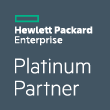
HPE Synergy is the world’s first truly Composable Infrastructure and today’s new hybrid IT engine. Synergy enables you to maintain the structure and security of traditional IT, whilst still having flexibility and speed for new applications.

1. Cloud-like speed
Composable Infrastructure enables DevOps teams to spin up new services in minutes to get new experiences into customers’ hands faster, delivering cloud-like speed from your own secure datacentre. |

2. Single platform
Run traditional applications and cloud-native apps from a single platform that supports everything from bare-metal deployment to virtual machines and containers. This allows IT to align behind a single platform to reduce datacentre complexity and cost. |

3. Software-defined
Intelligent software recognises and automatically integrates compute, storage, and fabric into resource pools that can be aggregated and disaggregated to meet the needs of any application. Template-driven provisioning helps ensure policy compliance and reduces risk exposure. |

4. Operational efficiency
Remove the need to stand up separate siloed environments for different applications. Automated provisioning via templates and a unified API enables application infrastructure provisioning in minutes instead of days, bringing cloud-giant efficiency to your datacentre. |

5. Continuous development
Developers can request exactly the amount of compute, storage, and networking fabric their applications need, directly from code. The unified API aggregates physical resources just like virtual and public-cloud resources, giving developers true infrastructure-as-code capabilities. |

6. Fluid IT
Accelerate application development by giving DevOps teams more control over their environments. Fluid resource pools allow developers to execute non-disruptive changes and to continuously refine applications to meet customer needs as they arise. |

7. IT economics
Template-driven provisioning and non-disruptive updates mean IT spends less time maintaining infrastructure, reducing labour costs. Fluid pools of resources that can be aggregated on demand increase utilisation and reduce over-provisioning and stranded capacity. |

8. Competitive advantages
Bridging the performance and control of dedicated infrastructure with the flexibility of the cloud allows lines-of-business to accelerate delivery of new customer experiences and revenue opportunities to stay ahead of the competition. |

9. Future-proofed datacentre
Be ready for whatever the future might bring with a scalable and extendable infrastructure and robust partner ecosystem that provides a firm foundation for today’s hybrid IT and the capacity and flexibility to take future innovations in stride. |

10. Seamless evolution
Starting with as little as a half-rack of gear, Composable Infrastructure can be deployed easily and incrementally, side-by-side with your existing infrastructure. Deploy it as part of your standard refresh cycle to grow your capabilities at a pace that makes sense for your business. |
If you would like to learn more about any of the technologies mentioned or discuss other ideas for revolutionising your infrastructure, our team are on hand to help. Contact us at info@xma.co.uk or call 0115 846 4000. Alternatively, you can complete our contact form below.
Top tech that we think will make this academic year epic!
The uniforms are ironed, the shoes are polished and parents are breathing a small sigh of relief – the summer holidays are over and it’s time to get back to business!
As the new academic year commences, it brings with it a fresh beginning, a blank canvas for new opportunities and endless possibilities. It’s an exciting time as students embark on the next chapter in their educational journey.
But it’s an exciting time for us too! There’s nothing more rewarding than seeing our young learners achieve their dreams, especially now that so much more is possible through the innovative application of IT.
Technology has opened up a whole new world for learning. Students have flexibility over what mediums they can learn with, they have immediate access to information and are no longer restricted to the classroom.
Exciting new technologies are emerging, breaking down the boundaries of traditional learning and enriching the educational experience. With so many new innovations designed to make learning more fun, we have narrowed down the selection to a few of our favourites…
3D Print
Building the vision into a tangible outcome
Print no longer means “Print”! Sitting perfectly within STEAM curricula, 3D print provides a truly creative and immersive learning environment. By producing tangible results, students are instantly engaged, developing a real motivation to learn. This hands-on-learning approach brings complex concepts to life and 3D print helps bridge the gap between traditional classroom concepts and reality.

Virtual Reality
Immerse learners in a simulated learning environment
Virtual Reality (VR) was a thing of the future but now it’s here and making waves through the education sector by changing the way educational content is delivered, allowing users to interact with it within a virtual world.
Students can explore a subject in detail, without having to read up about it. They can develop an understanding of how things work in a more practical environment. And they can scale learning experiences, making them more engaging and dynamic.

Microsoft Surface Go
Effortless 2:1 computing
The latest addition to the Surface family! The device is a 10-inch screen and 3:2 display with Microsoft claiming it is the ‘smallest, lightest and most affordable Surface yet’. It’s revolutionary 2:1 model enables the mobility of a tablet with the performance of a laptop and includes enhanced lesson customisation with Office 365 and seamless tools like Microsoft Teams enable assignment creation, progress tracker.
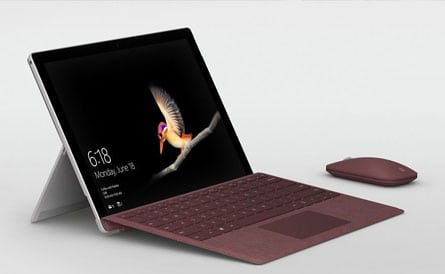
Sphero
Teaching students to code
We love this little guy! Sphero is an app-enabled robot which uses basic code to programme its actions – whether that be jumping, moving in a particular direction, dancing or changing colour. With its own Edu App providing heaps of collaborative STEAM activities such as Draw & Drive to learn real JavaScript, Sphero captures and nurture imaginations instantly.

Spongy Elephant
Award winning bite-sized training for schools and trusts
Ok, so it’s not exactly tech but we still see Spongy Elephant having a huge presence in ed this term! Put simply, Spongy Elephant provides your staff with bite-size learning bursts that are easy-to-access, easy-to-consume and easy-to-implement when they need them, rather than have them scheduled for school INSET sessions and offsite formal training.

We are helping schools similar to yours, to introduce the latest and greatest tech to their classrooms, giving them the confidence and reassurance that they are providing their students with the best learning experience possible.
If you would like to learn more about any of the technologies mentioned or discuss other ideas for revolutionising your classroom, our Education team are on hand to help.
Success for XMA as the 2018 CRN Channel awards shortlist is announced
In its 25th year, many will have been anxiously awaiting this years’ shortlist for the CRN Channel Awards 2018. The awards are the perfect opportunity to share acheivements and recognise those who have made outstanding contributions to the channel. XMA are proud to announce our shortlisting at this years awards.
As the current reigning winners of the CRN Public Sector VAR award in 2017, we have continued to deliver value to our public sector customers. As a result, XMA have been named one of the finalists in the running to be named this years winners. Further to this, XMA have also been shortlisted under the ‘Reseller of the Year (£51m+)’ category, a prestigious title for any reseller in the channel.
Ian Cunningham, Director of Sales & Marketing at XMA had this to say on the news of our shortlistings:
“As competition for the CRN Reseller of the Year and Public Sector VAR of the Year awards is so incredibly high, I am delighted XMA have been shortlisted for both awards for the second year in a row. Last year I was incredibly proud to accept the CRN Award for Public Sector VAR of the year on behalf of XMA, particularly in front of an audience of industry peers.”
“XMA is powered by our people and it is them who make these awards possible through their hard work and focus on our customers. They live our values and make a difference.”
The awards ceremony will take place on the 15th November, where we look forward to celebrating success with other industry peers from across the channel.
2 rules of thumb as you modernise your Data Centre
There are two rules when it comes to modernising your datacentre but what it boils down to is focusing on a good outcome.
Rule #1: Keep it simple
When technology needs an update, some organisations choose to modernise over time, following the same problem-by-problem approach they used to build the original data centre. This piecemeal approach is complex and can be agonisingly slow. What’s worse, all that time and effort won’t necessarily lead to a better end product or even lower costs.
Instead of focusing on daily problems that arise, hyperconverged infrastructure (HCI) lets you focus on the outcome: a simpler data centre that’s cost-effective and easy to manage. HCI takes a building block approach to architecture, consolidating compute, storage, network switching, replication, and backup in a single integrated system. The consolidation of these IT functions onto virtualized hardware can greatly simplify environments that have been divided by siloed point solutions.
VM-centric HCI systems are also simple for IT administrators to manage, and require much less data centre space than traditional IT devices.
Rule #2: Don’t overspend
Hyperconvergence requires some upfront investment, but it can deliver a huge return on that investment. In this study based on research with real world customers, Forrester Consulting found that HCI reduces TCO by 69% on average compared to traditional IT. Converging the entire IT stack – firmware, hypervisor, and data virtualisation software – has additional advantages, according to that same study. Data centre footprint can be reduced 10:1, backups and disaster recovery become simple and straightforward, and upgrades are managed for the whole stack. The most efficient solutions also free up significant staff time, boosting the economic benefits even further. IDC reports an 81% increase in time available to focus on new projects as a direct result of hyperconverged deployment.
Our data centre solutions guarantee high availability, reliability and security for your infrastructure
Read More
The Hidden Costs of Printing
Avoid a hidden costs discussion about printers by tackling your expenses head-on.
Companies are throwing money away on unnecessary printing, the needless use of colour and abandoned print jobs. Personnel can print without limitations and lack the training to print in a responsible way.
Shave 10% to 30% off your print budget by actively managing your printing behaviour.
How to avoid printer conversations
Your old printers may have served you well, but how much is your loyalty really costing? The older the printer, for example, the more likely that it consumes significant amounts of energy even when it’s idle.
Modern printers are on average 35.6% more efficient than their predecessors.
Learn more about the hidden costs of printing and how to avoid those awkward printing conversations in this report.
Enter your details below to download
How to avoid printer conversations
Avoid awkward privacy and security vulnerability questions with a secure print set-up.
Network-connected printers can be a route into your company for cyber criminals. For example, if default passwords are still in use or your Wi-Fi network is unsecure, your printing is vulnerable. By failing to tackle these potential weak spots, your business is in danger of GDPR’s heavy-weight penalties.
Just 22% of all businesses surveyed were completely assured their print infrastructure was secure.1
Companies operating a standardised printer fleet are 26% less likely to suffer data loss.1
Make sure printer security doesn’t put your business in peril—download the report by entering your details below
1 Quocirca Managed Print Services Landscape, 2017. European survey results of 180 midmarket (500-999 employees) and large (1000+ employees) organisations in UK, France and Germany using a managed print service.
Does your technology make the grade? 4 reasons why technology is critical to learning
With GCSE results out today and expected to have been the toughest yet with the new grading system, it got us thinking. How essential is technology to the way our students learn?
When I think back to my school days, which actually weren’t too long ago (no, really!), the overhead projector was the latest mod-con to hit the assembly hall and the chalkboard was still the smartest way to share real-time lesson content.
Well, technology has come a long way since those days, yet we still managed back then. Students were still learning, achieving and prospering from their education. So if we were able to nurture success before the technology boom, why is it so important in today’s classroom?
Here are 4 reasons why we believe technology now plays a critical role in learning:
1. Students demand it
Teens spend nearly 9 hours every day consuming media and have grown up immersed in technology, so keeping up with this demand is essential. The innovative adoption of technology can also play a key role in the recruitment of the next student body but IT departments should ensure that core infrastructures and applications have the flexibility to support these changes.
2. Learn at their own pace
Traditional learning could often be fast paced, risking a drop off of concentration and understanding. With the integration of technology in the classroom and learning concepts such as flipped learning, students can learn at their own speed, pause, and recap whenever they need, meaning that the more advanced student can go ahead, freeing up the teacher to provide support 1:1 to those who need it.
3. Enhance Engagement
Feedback from our customers over the years suggests that students learn best being more interactive. This is particularly apparent in STEAM subjects where content is often more complex. Technologies such as 3D print and robotics are leading the way in STEAM by breaking down the learning barriers and offering more practical methods of learning, whilst future-proofing students as they enter the workplace.
4. Enable Collaboration
Technology permits a connected world and in this case, a connected learning environment. With intelligent applications such as Office 365 and G Suite, students and teachers can communicate, collaborate, chat and use the familiar productivity applications in a secure environment.
As experts in education technology, we are close to the market and its trends. Here are a few technologies that are already making a real impact in the classroom:
Chromebooks
Chromebooks are taking over the classroom and the reasons are simple. They are cost effective and affordable, feature an all-day battery life and instant on functionality; and with Chromecast, students and teachers can instantly share their screen.
If you are interested in Chromebook, you should check out our latest offer! You can get a HP Chromebook for as little as £65.00!
3D print
For reasons we’ve previously discussed, 3D printing can play a valuable part in STEAM subjects, transforming the classroom into an interactive learning environment.
iPad
iPad is the ideal computing companion both inside and outside of the classroom. Its portable format, instant load up time and touch screen makes life easy for teachers and students alike. Perfect for internet research, making videos and music, taking lesson notes and sharing and managing content. What’s more, iPad is now much more cost effective and has full integration with cloud platforms such as Google and Microsoft.
So it’s clear, we have come a long way since school days were guided by a text book and piece of chalk. The dawn of the internet revolutionised the way we gained information and technology evolved around us – so much so, that teens today are technology native and would probably rather swap their right kidney than sacrifice their mobile phone.
That said, technology has enabled personalised, engaging and even mobile learning. Its enhanced collaboration and takes traditional subjects such as science, engineering and technology to the next level. Without it, the classroom struggles to thrive which is why building a technology environment that supports these trends is essential.
Is your tech up to the task?
Not sure how to enable cloud managed mobility, whether your network can support the load or how flipped learning can really make a difference? Our specialists have the answers and can help determine whether your existing IT is up to the job.
Ben Brown
Head of Schools
5 myths busted: Why MPS really is a game changer for Healthcare
NHS frontline providers were expected to make efficiency savings worth a total £3.7 billion by reducing costs and improving ways of working during 2017/18.
That wasn’t just an aspiration – it was a mandatory requirement for every trust and Clinical Commissioning Group in the country, and achieving this target has only been made possible by improving efficiency and making savings in every area of the service.
That is an ongoing process, but it’s surprising that more NHS organisations haven’t considered the benefits of a Managed Print service, especially as so many are lumbered with inefficient and ineffective legacy print systems.
What is Managed Print Service (MPS)?
Here, we go through some of the most common misconceptions about MPS, and explore how true they really are.
1. Print is on the way out anyway
It may seem counter-intuitive to be considering the future of your print function when the NHS has announced its ambition to be paper-free at the point of care by 2020.
But, the reality is that the widespread use of paper will continue within parts of the service beyond that date, and adopting MPS can be an effective way to cut both the number of printers in the organisation, and the amount of supplies used, including paper.
Consolidating a fleet of older, less-efficient, single-function printers into a smaller number of more versatile multi-function printers, can help cut the amount of print supplies used, as well as helping address the annual cost of paper storage. That’s estimated to be between £500,000 and £1million for each NHS Trust , while MPS can shrink your printer fleet by up to 60 per cent.
2. Existing NHS systems aren’t compatible
One thing common to many NHS IT systems is that they still use older technologies.
Systems have often evolved organically over time, leading to networks that use a variety of different kinds of hardware and software.
But that is no barrier to using MPS, which is a flexible service that can be applied in a variety of ways.
Many believe that MPS can only be used with a unified network of modern printers, but it can work with existing legacy kit too.
In reality, we commonly find that organisations require a bespoke solution, which can include replacing some older hardware that is becoming obsolete with either leased or bought new machines. Other items of existing hardware may still be functional and can be incorporated alongside the new tech, helping to minimise the initial investment required.
3. The upfront investment is prohibitive
Every MPS process we manage starts off with an assessment of your print requirements by a member of our experienced team, who will appraise your current print infrastructure to understand what you need from MPS. We’ll then build a tailored and sustainable solution that balances security, print policies, productivity and usability, which could well include acquiring more efficient hardware.
Of course, any new supplier agreement will justifiably come under financial scrutiny – after all, this is taxpayers’ money that is being spent. But, to help manage that cost, MPS typically offers flexible payment options. And we can provide an audit that details the savings that you can achieve, which are typically around 20 per cent per page printed, justifying the business case for the investment.
4. Installing MPS is disruptive
With growing demand for NHS services continuing to heap pressure on staff and resources, it’s no surprise that anything that could possibly interrupt services is a cause for concern. But the idea that installing MPS is complex and disruptive is outdated. Implementing MPS in a modern system can be as simple as flicking a switch – completely seamless. Where there is existing legacy technology to incorporate, they can still be integrated with minimal disruption.
5. MPS is a security risk
Sadly, we are all too aware that the NHS is a target for cyber crooks, but how can MPS help defend against those threats? A print audit will identify any print security risks in your organisation and recommend a tailored security plan to shut them down. That might include a printer sign-in procedure to stop documents being taken from output trays, or installing multifunctional printers with an automatic hard drive wiping function.
There are also network-level solutions that can be taken to reduce the risk of information being stolen by hackers. And it makes sense that, by having just one print provider implementing MPS across your organisation, the number of outsiders who have access to your networked devices is reduced. Criminals are constantly working to find new ways to hack in to computer systems, so staying safe means an ongoing process of audits and improvements.
We’ve got more than 30 years’ experience providing print solutions for organisations of all sizes.
Read More
5 considerations for moving to an All-flash data centre
Simplifying All-flash with HPE Nimble
The path to an all-flash data centre and cloud may be complicated, but it doesn’t have to be disruptive. Like many other organisations, you may be planning to move to all flash as your primary storage technology because of the many advantages over traditional storage.
But there are many obstacles related to application performance, availability, manageability, scalability, investment protection, and disaster recovery that need to be considered first. With a few simple recommendations, your organisation can avoid the most common missteps and make the transition painless.
Download this FREE check list and find out how to overcome the obstacles related to the all flash data centre.










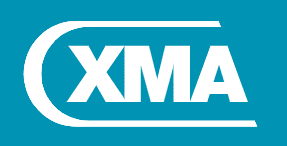

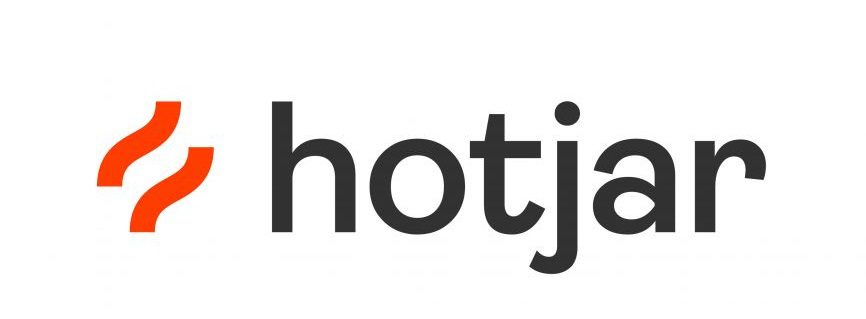 Monitoring by Hotjar
Monitoring by Hotjar